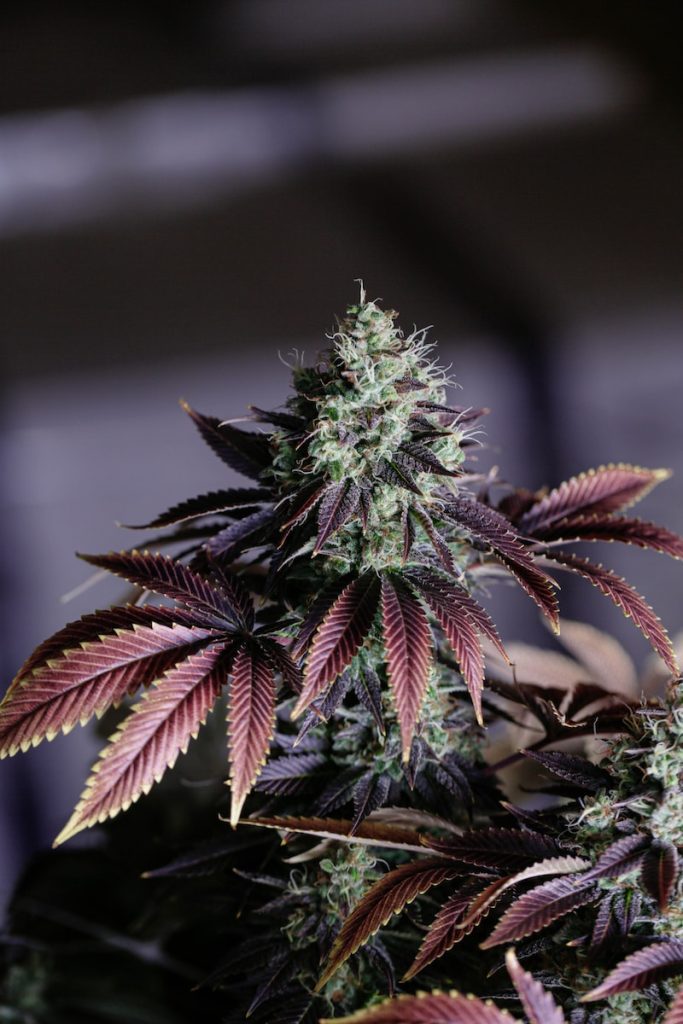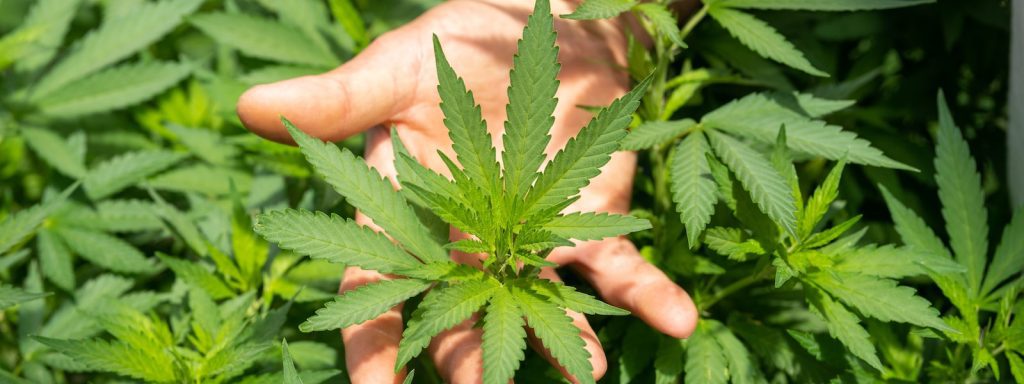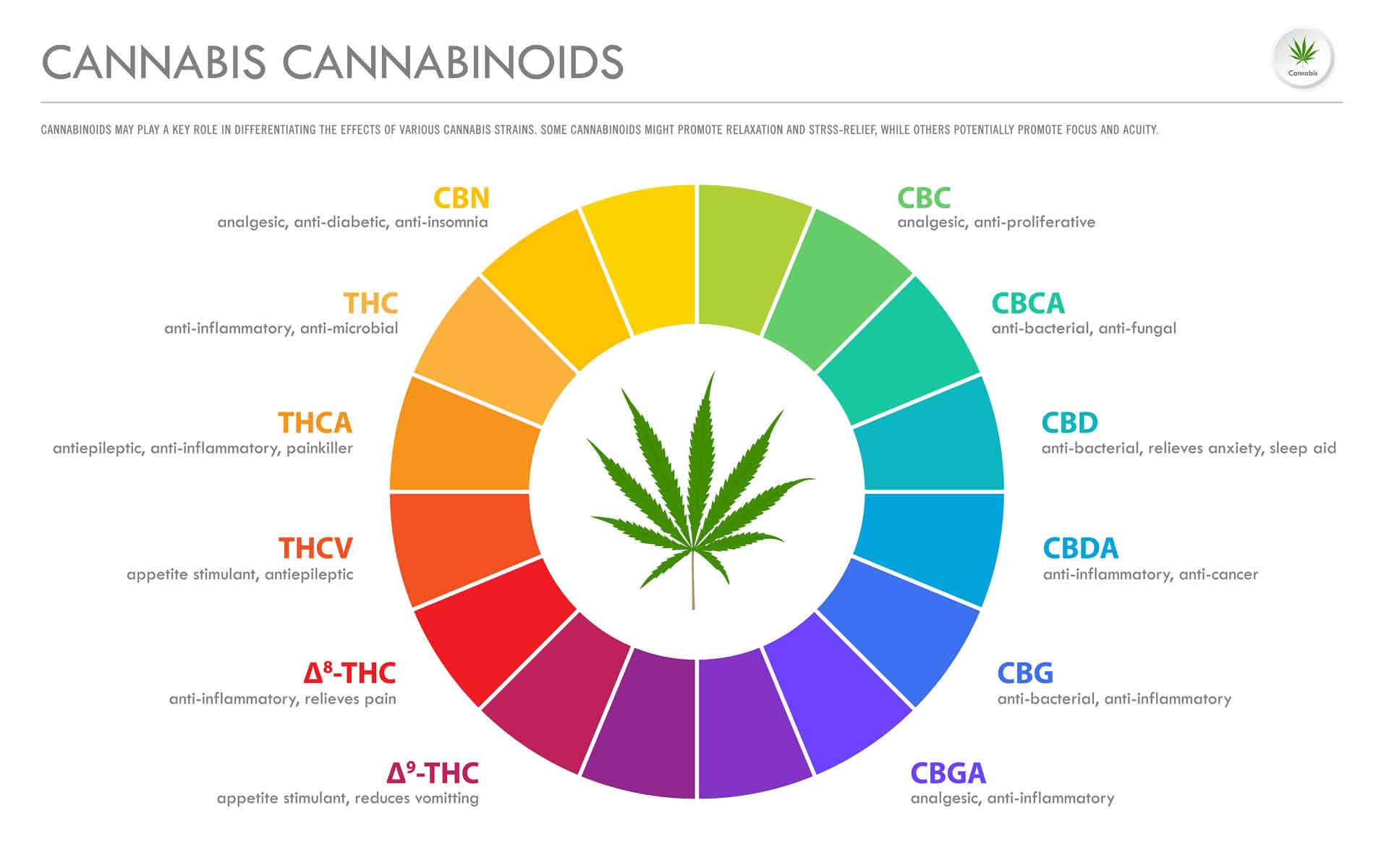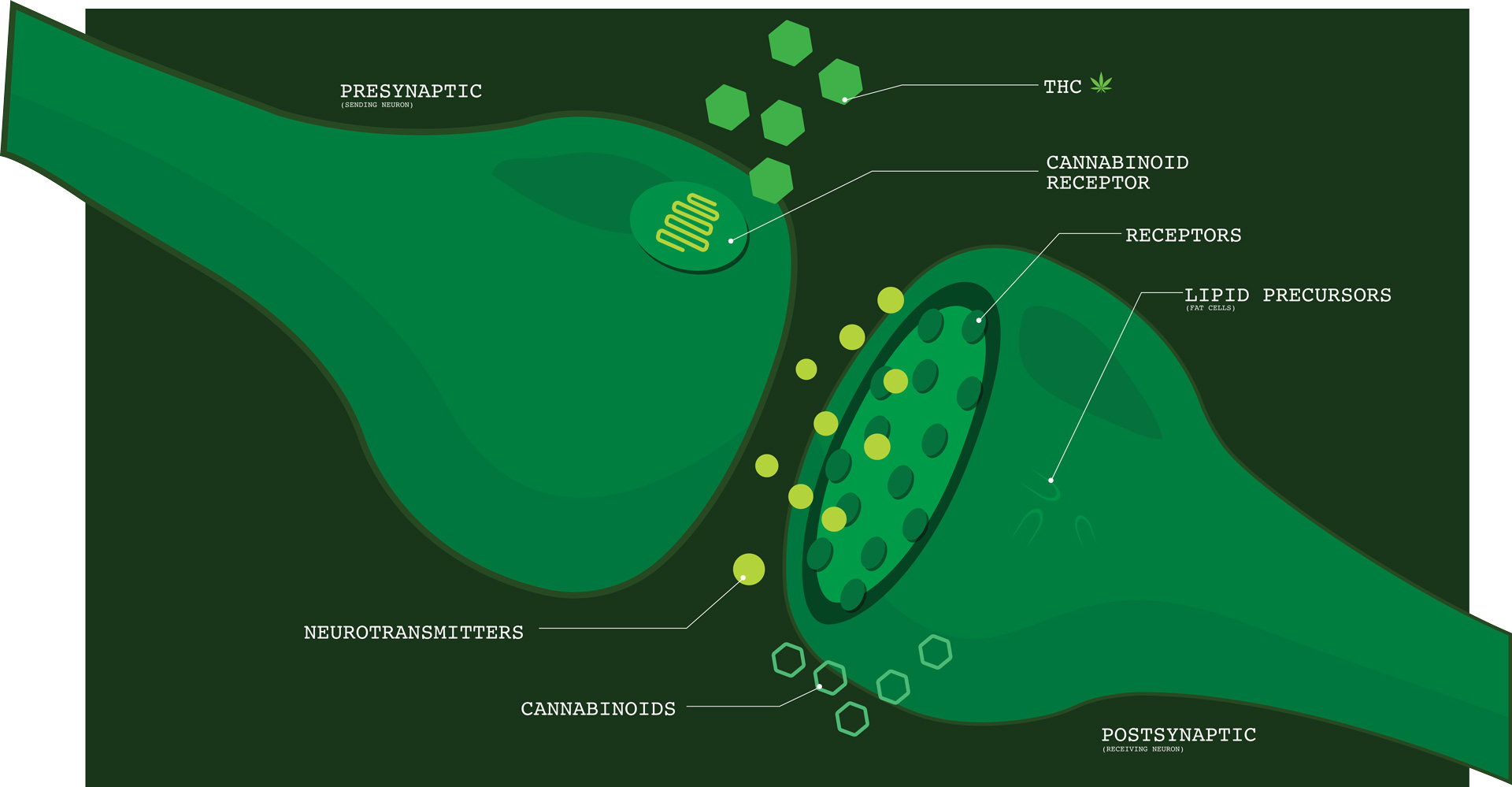Welcome to Cannabis 101
Gain a foundational understanding of the cannabis plant, its unique properties, and medical applications, underpinned by various research studies.
Delve into the fascinating world of cannabis and discover how it engages with the human body to offer a myriad of medicinal benefits. In this ‘Introduction to Cannabis’ course, we will explore the historical backdrop of the term ‘marijuana’, delve into the fundamental constituents of the cannabis plant, and distinguish between the indica and sativa varieties. We will also illuminate how cannabis components communicate with receptors in our body – interactions that may prove beneficial for a broad spectrum of applications, ranging from managing pain to enhancing memory.
Index
- Understanding Cannabis: How Does it Differ from Marijuana?
- Unraveling the Mysteries: What are Cannabinoids?
- Popular Cannabinoids: What are the Most Frequently Occurring Ones?
- A Biological Marvel: What is the Endocannabinoid System?
- Gateway to Effects: What are Cannabinoid Receptors?
- A Comparative Study: Endocannabinoids vs. Phytocannabinoids
- Indica vs. Sativa: What’s the Difference?
- A Closer Look at Indica Plants
- Understanding Sativa Plants: What are their Key Characteristics?


Understanding Cannabis: How Does it Differ from Marijuana?
Even though the terms ‘cannabis’ and ‘marijuana’ are often interchangeably used in the context of the cannabis industry, they hold distinctive connotations, historical backgrounds, and roots. Primarily, there’s no such thing as a ‘marijuana plant.’ Instead, the term is applied to refer to parts or the entirety of the cannabis plant. The term ‘marijuana,’ since its inception, has been frequently cast in a negative light. The term ‘marijhuana,’ borrowed from Spanish, was employed to underscore the link between the ‘devil’s weed’ and Mexican immigrants, who were purportedly the initial propagators of it in American society. Remarkably, during the early 1970s, the Nixon Administration standardized the spelling of the word to ‘marijuana.’² On the other hand, ‘cannabis’ is a scientific terminology usually signifying the Cannabis sativa species, which most scholars consider to be a singular, highly variable, and diversely characterized species. A minor academic debate persists about this classification, with a handful of researchers arguing that Cannabis indica and Cannabis ruderalis should be recognized as separate species instead of subspecies.³ With an ever-growing roster of health benefits (both established and under ongoing research), using the term ‘cannabis’ is not only crucial for shifting public perception, but it also reflects the plant’s potency, historical significance, and the imperative to dispel years of misinformation. As we strive to further destigmatize cannabis and illuminate its potential benefits for a vast range of medical conditions and ailments, it becomes critical to understand that improper terminology can negatively impact the industry.
¹CBD Web. (2017). Hemp vs. Marijuana vs. Cannabis: What’s the difference?. [online] Available at: http://www.cbdweb.org/medical-cannabis-guide/hemp-vs-marijuana-vs-cannabis [Accessed 2 Oct. 2017].
²Gettman, J. (2015). Marijuana vs. Cannabis: Pot-Related Terms to Use and Words We Should Lose · High Times. [online] High Times. Available at: http://hightimes.com/culture/marijuana-vs-cannabis-pot-related-terms-to-use-and-words-we-should-lose/ [Accessed 2 Oct. 2017].
³Leafly. (2017). The Cannabis Taxonomy Debate: Where Do Indica and Sativa Classifications Come From? | Leafly. [online] Available at: https://www.leafly.com/news/cannabis-101/the-cannabis-taxonomy-debate-where-do-indica-and-sativa-classific [Accessed 14 Oct. 2017].
Unraveling the Mysteries: What are Cannabinoids?
Cannabinoids represent a collection of active chemical compounds found in the cannabis plant. With over 100 unique cannabinoids identified to date in cannabis, these compounds encompass a wide range of effects.¹
These naturally-occurring substances are also produced within the human body, and are known as endocannabinoids. The introduction of plant-derived cannabinoids, or phytocannabinoids, such as those found in cannabis, can instigate various physiological responses through their interaction with the body’s endocannabinoid system.²
The endocannabinoid system, consisting of cannabinoid receptors spread throughout the body, plays a crucial role in maintaining homeostasis, or the body’s natural state of balance. It influences a wide array of functions, including mood, appetite, sleep, immune response, and pain.³
The interaction of phytocannabinoids with this system is what gives cannabis its therapeutic potential. For instance, THC, or delta-9-tetrahydrocannabinol, is the primary psychoactive cannabinoid in cannabis, and is responsible for the sensation of getting ‘high’ that is often associated with marijuana. On the other hand, CBD, or cannabidiol, is a non-psychoactive cannabinoid known for its potential in easing symptoms of various medical conditions.⁴
As the understanding of cannabinoids continues to deepen, the complexity and potential of these compounds for therapeutic applications become increasingly clear. This underscores the importance of continued research in this dynamic field.
¹Aizpurua-Olaizola, O., Soydaner, U., Öztürk, E., Schibano, D., Simsir, Y., Navarro, P., Etxebarria, N. and Usobiaga, A. (2016). Evolution of the Cannabinoid and Terpene Content during the Growth of Cannabis sativa Plants from Different Chemotypes. Journal of Natural Products, [online] 79(2), pp.324-331. Available at: http://pubs.acs.org/doi/abs/10.1021/acs.jnatprod.5b00949 [Accessed 14 Oct. 2017].
²Ligresti, A., De Petrocellis, L. and Di Marzo, V. (2016). From Phytocannabinoids to Cannabinoid Receptors and Endocannabinoids: Pleiotropic Physiological and Pathological Roles Through Complex Pharmacology. Physiological Reviews, [online] 96(4), pp.1593-1659. Available at: http://physrev.physiology.org/content/96/4/1593.long [Accessed 14 Oct. 2017].
³Fine, P. G., & Rosenfeld, M. J. (2013). The endocannabinoid system, cannabinoids, and pain. Rambam Maimonides medical journal, 4(4), e0022. Available at: https://www.ncbi.nlm.nih.gov/pmc/articles/PMC3820295/ [Accessed 14 Oct. 2017].
⁴Blessing, E. M., Steenkamp, M. M., Manzanares, J., & Marmar, C. R. (2015). Cannabidiol as a Potential Treatment for Anxiety Disorders. Neurotherapeutics, 12(4), 825–836. Available at: https://www.ncbi.nlm.nih.gov/pmc/articles/PMC4604171/ [Accessed 14 Oct. 2017].”
Popular Cannabinoids: What are the Most Frequently Occurring Ones?
Within the expansive landscape of cannabis, over 100 unique cannabinoids have been discovered, each boasting distinctive attributes. Among these numerous compounds, two have gained prominence due to the extent of their scientific investigation and their potent therapeutic properties: delta-9-tetrahydrocannabinol (THC) and cannabidiol (CBD).
Delta-9-tetrahydrocannabinol, often abbreviated to THC, is renowned as the primary psychoactive component of cannabis. This means THC-rich strains of cannabis are primarily responsible for eliciting the psychological alterations commonly associated with cannabis use. However, beyond its psychoactive capabilities, THC also possesses potent medicinal properties. A plethora of research has attested to THC’s efficacy in:
- Alleviating the wasting syndrome associated with HIV¹
- Enhancing ocular health, particularly in relation to glaucoma²
- Mitigating the severity of tremors or spasms³
- Functioning as a neuroprotectant, safeguarding the brain against damage⁴
In contrast to THC, cannabidiol (CBD) lacks psychoactive effects, meaning it doesn’t induce a ‘high’ in users. Despite this, CBD has been recognized for its profound therapeutic potential. Various studies have demonstrated the power of CBD in:
- Diminishing inflammation and associated discomfort⁵
- Alleviating symptoms of depression⁶
- Offering relief from convulsions, particularly relevant to conditions such as epilepsy⁷
- Reducing anxiety, improving overall mental well-being⁸
Contemporary research in the realm of cannabis science points towards an intriguing phenomenon termed the ‘entourage effect.’ This concept suggests that the constituents of cannabis, including cannabinoids, terpenes, and other compounds, exert a greater therapeutic influence when consumed collectively rather than in isolation⁹. This synergistic relationship between cannabis components underscores the integral nature of the whole plant in maximizing the potential benefits of cannabis-based therapies.

¹Struwe, M., et al. (1993). Effect of dronabinol on nutritional status in HIV infection. – PubMed – NCBI. [online] Available at: https://www.ncbi.nlm.nih.gov/pubmed/8395916.
²Adelli, G., et al. (2017). Development of a Δ9-Tetrahydrocannabinol Amino Acid-Dicarboxylate Prodrug With Improved Ocular Bioavailability. [online] Available at: https://www.ncbi.nlm.nih.gov/pmc/articles/PMC5389743.
³D.P. Sutherland. (2016). Effect of marijuana on Essential Tremor: A case report [abstract]. Mov Disord.
⁴Nguyen, C., et al. (2016). THC (Δ9-Tetrahydrocannabinol) Exerts Neuroprotective Effect in Glutamate-affected Murine Primary Mesencephalic Cultures Through Restoring Mitochondrial Membrane Potential and Anti-apoptosis Involving CB1Receptor-dependent Mechanism. Phytotherapy Research, [online] 30(12), pp.2044-2052. Available at: http://onlinelibrary.wiley.com/doi/10.1002/ptr.5712/abstract.
⁵Hammell, D., et al. (2015). Transdermal cannabidiol reduces inflammation and pain-related behaviours in a rat model of arthritis. European Journal of Pain, [online] 20(6), pp.936-948. Available at: https://www.ncbi.nlm.nih.gov/pmc/articles/PMC4851925.
⁶Schier, A., et al. (2014). Antidepressant-Like and Anxiolytic-Like Effects of Cannabidiol: A Chemical Compound of Cannabis sativa. CNS & Neurological Disorders – Drug Targets, [online] 13(6), pp.953-960. Available at: https://www.ncbi.nlm.nih.gov/pubmed/24923339.
⁷Devinsky, O., et al. (2017). Trial of Cannabidiol for Drug-Resistant Seizures in the Dravet Syndrome. New England Journal of Medicine, [online] 376(21), pp.2011-2020. Available at: http://www.nejm.org/doi/full/10.1056/NEJMoa1611618.
⁸Cannabis Use in Palliative Oncology: A Review of the Evidence for Popular Indications. (2017). [ebook] Haifa, Israel: The Israel Medical Association Journal: IMAJ, p.3. Available at: https://www.ima.org.il/FilesUpload/IMAJ/0/228/114215.pdf.
⁹Ben-Shabat, S., et al. (1998). An entourage effect: inactive endogenous fatty acid glycerol esters enhance 2-arachidonoyl-glycerol cannabinoid activity. European Journal of Pharmacology, [online] 353(1), pp.23-31. Available at: http://www.sciencedirect.com/science/article/pii/S0014299998003926?via%3Dihub [Accessed 14 Oct. 2017].”
A Biological Marvel: What is the Endocannabinoid System?

Looking for more information on the endocannabinoid system? Well, the ECS is a sophisticated biological network, and plays a crucial role in the maintenance and regulation of various physiological and cognitive functions. This intricate system comprises endogenous cannabinoid receptors that pervade diverse areas of the human body. Their presence extends to the brain, central and peripheral nervous systems, connective tissues, glands, organs, and immune cells. Notably, the ECS directly influences several processes in the human body, including appetite regulation, pain perception, mood modulation, and memory function¹.
The ECS is often described as ‘the body’s own cannabinoid system,’ reflecting its critical role in our internal physiological balance². Its primary function is to maintain homeostasis, which refers to the body’s ability to preserve a stable internal environment despite external changes³. This system plays an integral part in numerous aspects of our day-to-day bodily functions, promoting balance and harmony⁴.
As our understanding of the ECS continues to evolve, scientists are unearthing new insights into its potential as a target for therapeutic interventions. The discovery of the ECS and the ongoing elucidation of its functionalities present promising avenues for the development of novel treatments targeting a range of health conditions.
¹Aizpurua-Olaizola, O., et al. (2017). Targeting the endocannabinoid system: future therapeutic strategies. Drug Discovery Today, [online] 22(1), pp.105-110. Available at: http://www.sciencedirect.com/science/article/pii/S1359644616302926.
²Grotenhermen, Franjo (23 Jul 2012). “The Therapeutic Potential of Cannabis and Cannabinoids”. Dtsch Arztebl Int. 109 (PMC3442177): 495–501. PMC 3442177 Freely accessible. PMID 23008748. doi:10.3238/arztebl.2012.0495.
³Melamede, R. (2005). Harm Reduction Journal, [online] 2(1), p.17. Available at: https://harmreductionjournal.biomedcentral.com/articles/10.1186/1477-7517-2-17.
⁴Bermudez-Silva, F., Cardinal, P. and Cota, D. (2011). The role of the endocannabinoid system in the neuroendocrine regulation of energy balance. Journal of Psychopharmacology, [online] 26(1), pp.114-124. Available at: http://journals.sagepub.com/doi/abs/10.1177/0269881111408458.
Further Reading:
⁵Lu, H. C., & Mackie, K. (2020). An introduction to the endogenous cannabinoid system. Biological psychiatry, 79(7), 516–525. https://doi.org/10.1016/j.biopsych.2020.01.033.
⁶Morales, P., Hurst, D. P., & Reggio, P. H. (2017). Molecular Targets of the Phytocannabinoids: A Complex Picture. Progress in the chemistry of organic natural products, 103, 103–131. https://doi.org/10.1007/978-3-319-45541-9_4.”
Gateway to Effects: What are Cannabinoid Receptors?
Cannabinoid receptors, intrinsic components of the endocannabinoid system (ECS), act in harmony with endocannabinoids and the enzymes responsible for their synthesis and degradation¹. These receptors serve as the gateway to the myriad effects of cannabinoids, including those derived from both the body’s natural endocannabinoids and externally introduced cannabinoids, such as those found in cannabis.
There are currently two recognized types of cannabinoid receptors, named CB₁ and CB₂²,³. These receptors are distributed unevenly throughout the body, each with their predominant areas of concentration and specific roles.
Cannabinoid receptor type 1 (CB₁) is located chiefly within the central and peripheral nervous systems. It plays an integral role in regulating a variety of cognitive and physiological processes. In contrast, cannabinoid receptor type 2 (CB₂) primarily populates the immune cells, having a vital role in modulating immune response.
Both CB₁ and CB₂ receptors contribute to a host of body processes and systems, comprising:
- Immune response
- Hematopoiesis (blood formation)
- Cognitive function
- Memory retention and recall
- Anxiety management
- Motor behavior regulation
- Sensory responses
- Autonomic and neuroendocrine reactions
- Nausea control
- Hunger and satiety signals
- Metabolic regulation, including insulin resistance, and more.

¹Mackie, K. (2008). Cannabinoid Receptors: Where They are and What They do. Journal of Neuroendocrinology, [online] 20(s1), pp.10-14. Available at: https://www.ncbi.nlm.nih.gov/pubmed/18426493.
²Matsuda LA, Lolait SJ, Brownstein MJ, Young AC, Bonner TI (1990). “Structure of a cannabinoid receptor and functional expression of the cloned cDNA”. Nature. 346 (6284): 561–4. PMID 2165569. doi:10.1038/346561a0.
³Gérard, C., Mollereau, C., Vassart, G. and Parmentier, M. (1991). Molecular cloning of a human cannabinoid receptor which is also expressed in testis. Biochemical Journal, [online] 279(1), pp.129-134. Available at: https://www.ncbi.nlm.nih.gov/pmc/articles/PMC1151556/.
Further Reading:
⁴Pertwee, R. G. (2006). The pharmacology of cannabinoid receptors and their ligands: an overview. International Journal of Obesity, 30(S1), S13–S18. https://doi.org/10.1038/sj.ijo.0803272.
⁵Maccarrone, M., Bab, I., Bíró, T., Cabral, G. A., Dey, S. K., Di Marzo, V., … & Zimmer, A. (2015). Endocannabinoid signaling at the periphery: 50 years after THC. Trends in pharmacological sciences, 36(5), 277-296. https://doi.org/10.1016/j.tips.2015.02.008.
A Comparative Study: Endocannabinoids vs. Phytocannabinoids
Endocannabinoids and phytocannabinoids are two distinctive classes of compounds that interact with the endocannabinoid system (ECS), a complex network of receptors and signaling molecules present in the brain, central nervous system, and peripheral tissues. This system plays a critical role in the regulation of numerous physiological processes.
Endocannabinoids, often described as the body’s natural THC (delta-9-tetrahydrocannabinol), are naturally produced by the human body. The ECS comprises these endogenous (internally produced) cannabinoid compounds and their corresponding receptors. Extensive studies on endocannabinoids have unveiled their role as neuromodulators influencing diverse processes, including motor learning¹, appetite regulation², and pain perception³. These signaling molecules, acting on cannabinoid receptors, help maintain the body’s internal balance or homeostasis.
Phytocannabinoids, on the other hand, originate from plants, specifically the Cannabis sativa species. These plant-derived compounds share a similar chemical structure with endocannabinoids, enabling them to interact with the ECS. The most well-known phytocannabinoids include THC, THCA, CBD (cannabidiol), CBDA (cannabidiolic acid), CBN (cannabinol), CBG (cannabigerol), CBC (cannabichromene), and THCV (tetrahydrocannabivarin). So far, researchers have isolated over 100 unique cannabinoids from the cannabis plant⁴.
The interplay between endocannabinoids and phytocannabinoids with the ECS constitutes a vast and dynamic field of study, providing valuable insights into their potential therapeutic applications.
¹Kishimoto, Y. (2006). Endogenous Cannabinoid Signaling through the CB1 Receptor Is Essential for Cerebellum-Dependent Discrete Motor Learning. Journal of Neuroscience, 26(34), pp.8829-8837.
²Di Marzo, V., Goparaju, S., Wang, L., Liu, J., Bátkai, S., Járai, Z., Fezza, F., Miura, G., Palmiter, R., Sugiura, T., and Kunos, G. (2001). Leptin-regulated endocannabinoids are involved in maintaining food intake. Nature, 410(6830), pp.822-825.
³Cravatt, B., Demarest, K., Patricelli, M., Bracey, M., Giang, D., Martin, B., and Lichtman, A. (2001). Supersensitivity to anandamide and enhanced endogenous cannabinoid signaling in mice lacking fatty acid amide hydrolase. Proceedings of the National Academy of Sciences, 98(16), pp.9371-9376.
⁴Aizpurua-Olaizola, O., Soydaner, U., Öztürk, E., Schibano, D., Simsir, Y., Navarro, P., Etxebarria, N., and Usobiaga, A. (2016). Evolution of the Cannabinoid and Terpene Content during the Growth of Cannabis sativa Plants from Different Chemotypes. Journal of Natural Products, 79(2), pp.324-331.
Further Reading:
⁵Piomelli, D., & Sasso, O. (2014). Peripheral gating of pain signals by endogenous lipid mediators. Nature Neuroscience, 17(2), 164–174. https://doi.org/10.1038/nn.3621.
⁶Pertwee, R. G. (2008). The diverse CB1 and CB2 receptor pharmacology of three plant cannabinoids: Δ9-tetrahydrocannabinol, cannabidiol and Δ9-tetrahydrocannabivarin. British Journal of Pharmacology, 153(2), 199–215. https://doi.org/10.1038/sj.bjp.0707442.

Indica vs. Sativa: What’s the Difference?
Cannabis plants are typically classified into two major categories: Cannabis indica and Cannabis sativa. Each of these types has its unique profile of effects, which have found wide applications in the medicinal field.
Cannabis indica plants are renowned for their potential to induce relaxation and reduce anxiety. They have been popularly used to promote sleep and are beneficial for alleviating muscle spasms and tremors. These conditions are often associated with disorders such as multiple sclerosis and Parkinson’s disease¹.
In contrast, Cannabis sativa strains have been widely studied for their antipsychotic and neuroprotective properties² ³. These strains are known to stimulate appetite, making them suitable for managing conditions like anorexia or side effects from chemotherapy. Sativa strains have also been effective in treating chronic pain and mood disorders such as depression and anxiety⁴.
Hybrid strains, which are genetically a mix of both indica and sativa, offer a balanced spectrum of effects. These strains, with their blend of traits from both parents, can offer a broad range of therapeutic benefits, thereby increasing their versatility in treatment. These hybrids can be tailored to exhibit specific traits, making them beneficial for targeted therapies⁵.
In essence, the distinction between indica and sativa extends beyond their physical appearance, influencing the potential and the array of medicinal effects they can offer. It’s also important to not rely just on these classifications, but also the cannabinoid and terpene profiles of the specific cannabis plant you may be using, so that you get a fuller picture of its therapeutic potential.
¹Medicaljane.com. (2017). About Cannabis Indica | Medical Marijuana 101 Overview. [online] Available at: https://www.medicaljane.com/2013/07/25/cannabis-indica-as-explained-by-medical-jane/ [Accessed 14 Oct. 2017].
²Zuardi, A., Crippa, J., Hallak, J., Moreira, F., and Guimarães, F. (2006). Cannabidiol, a Cannabis sativa constituent, as an antipsychotic drug. Brazilian Journal of Medical and Biological Research, [online] 39(4), pp.421-429. Available at: http://www.scielo.br/scielo.php?pid=s0100-879×2006000400001&script=sci_arttext [Accessed 14 Oct. 2017].
³Iuvone, T., Esposito, G., Esposito, R., Santamaria, R., Di Rosa, M., and Izzo, A. (2004). Neuroprotective effect of cannabidiol, a non-psychoactive component from Cannabis sativa, on beta-amyloid-induced toxicity in PC12 cells. Journal of Neurochemistry, [online] 89(1), pp.134-141. Available at: http://onlinelibrary.wiley.com/doi/10.1111/j.1471-4159.2003.02327.x/full [Accessed 14 Oct. 2017].
⁴Ware, M., Wang, T., Shapiro, S., Robinson, A., Ducruet, T., Huynh, T., Gamsa, A., Bennett, G., and Collet, J. (2010). Smoked cannabis for chronic neuropathic pain: a randomized controlled trial. Canadian Medical Association Journal, [online] 182(14), pp.E694-E701. Available at: http://www.cmaj.ca/content/182/14/E694.short [Accessed 14 Oct. 2017].
⁵Leaf Science. (2017). Indica vs. Sativa: What’s The Difference? – Leaf Science. [online] Available at: https://www.leafscience.com/2017/10/16/indica-vs-sativa-whats-difference/ [Accessed 24 Oct. 2017].
Further Reading:
⁶Russo, E. B. (2011). Taming THC: potential cannabis synergy and phytocannabinoid-terpenoid entourage effects. British Journal of Pharmacology, 163(7), 1344–1364. https://doi.org/10.1111/j.1476-5381.2011.01238.x.
⁷Cuttler, C., Spradlin, A., & McLaughlin, R. J. (2018). A naturalistic examination of the perceived effects of cannabis on negative affect. Journal of Affective Disorders, 235, 198–205. https://doi.org/10.1016/j.jad.2018.04.054.

A Closer Look at Indica Plants
Cannabis indica plants are often recognized by their distinctive physical attributes. They typically possess a shorter stature compared to their sativa counterparts, often not exceeding six feet in height. This compact size, along with their robust and densely branched structure, makes them suitable for indoor cultivation.
One of the most notable characteristics of indica plants is their leaf structure. The leaves are broad and short, giving them a chunky appearance. These wide leaves often overlap each other, providing a thick canopy that can be beneficial in protecting the plant from harsh environmental conditions.
Moreover, the leaves of indica plants usually present a darker green hue. This darker color is attributed to higher amounts of chlorophyll, the pigment responsible for absorbing sunlight to facilitate photosynthesis. This high chlorophyll content enables the indica plant to efficiently capture and utilize available sunlight, making them adaptable to varying light conditions.
While these physical characteristics of the Cannabis indica plant are striking, it’s important to note that the plant’s medical efficacy is largely derived from its chemical composition, including the presence of numerous cannabinoids and terpenoids.
Additional Sources:
Mudge, E. M., Murch, S. J., & Brown, P. N. (2019). Leaner and greener analysis of cannabinoids. Analytical and Bioanalytical Chemistry, 411(19), 4861–4862. https://doi.org/10.1007/s00216-019-01787-1.
Hillig, K. W., & Mahlberg, P. G. (2004). A chemotaxonomic analysis of cannabinoid variation in Cannabis (Cannabaceae). American Journal of Botany, 91(6), 966–975. https://doi.org/10.3732/ajb.91.6.966.
De Meijer, E. P., Bagatta, M., Carboni, A., Crucitti, P., Moliterni, V. M., Ranalli, P., & Mandolino, G. (2003). The inheritance of chemical phenotype in Cannabis sativa L. Genetics, 163(1), 335–346. PMID: 12586720.

Understanding Sativa Plants: What are their Key Characteristics?
Cannabis sativa plants exhibit a range of physical attributes that set them apart from their Cannabis indica counterparts. Known for their tall and slender stature, sativa plants can often reach heights exceeding 12 feet, with some even surpassing 20 feet under optimal growth conditions. This vertical growth is accompanied by an open branching system, where the branches are spread further apart, lending to their airy and elongated appearance.
The leaf structure of sativa plants is another defining characteristic. They are adorned with long, narrow leaves that are typically lighter in color compared to indica varieties. This leaf structure, combined with the plant’s height and branching system, offers the plant greater exposure to sunlight, which is crucial for photosynthesis.
When it comes to the flowering stage, sativa plants showcase another remarkable trait – they can grow significantly taller than their height during the vegetative state. This vertical spurt during the flowering stage is a result of the plant’s response to the change in light cycle and it further differentiates sativa from indica plants which tend to exhibit less height growth during flowering.
Despite these distinctive physical features, it’s important to note that the therapeutic and psychoactive properties of cannabis are largely determined by the plant’s chemical composition, including the cannabinoids and terpenes it produces, rather than its physical appearance.
Additional Sources:
Hillig, K. W. (2005). Genetic evidence for speciation in Cannabis (Cannabaceae). Genetic Resources and Crop Evolution, 52(2), 161–180. https://doi.org/10.1007/s10722-003-4452-y.
Piomelli, D., & Russo, E. B. (2016). The Cannabis sativa Versus Cannabis indica Debate: An Interview with Ethan Russo, MD. Cannabis and Cannabinoid Research, 1(1), 44–46. https://doi.org/10.1089/can.2015.29003.ebr.
McPartland, J. M., & Guy, G. W. (2014). Models of Cannabis Taxonomy, Cultural Bias, and Conflicts between Scientific and Vernacular Names. Botanical Review, 80(4), 327–381. https://doi.org/10.1007/s12229-014-9141-1.


